The Costa del Sol and a big rock
Ah, the Costa del Sol. Home to long sandy beaches, hot sun and cold beers, the Costa del Sol on the south coast of Spain conjures up images of lazy days avoiding cold winters, idyllic beaches and a cheap and easy Spanish lifestyle. Well, that may have been true back in the 1960’s and 70’s before millions of European and British tourists discovered this beautiful coastline and Spanish developers turned it into an ugly concrete jungle. Today it has to be one of the top places in Europe to avoid for people looking for a more natural and authentic beachside experience. And there we were, knocking the place while enjoying a picnic lunch on one of its long sandy beaches.
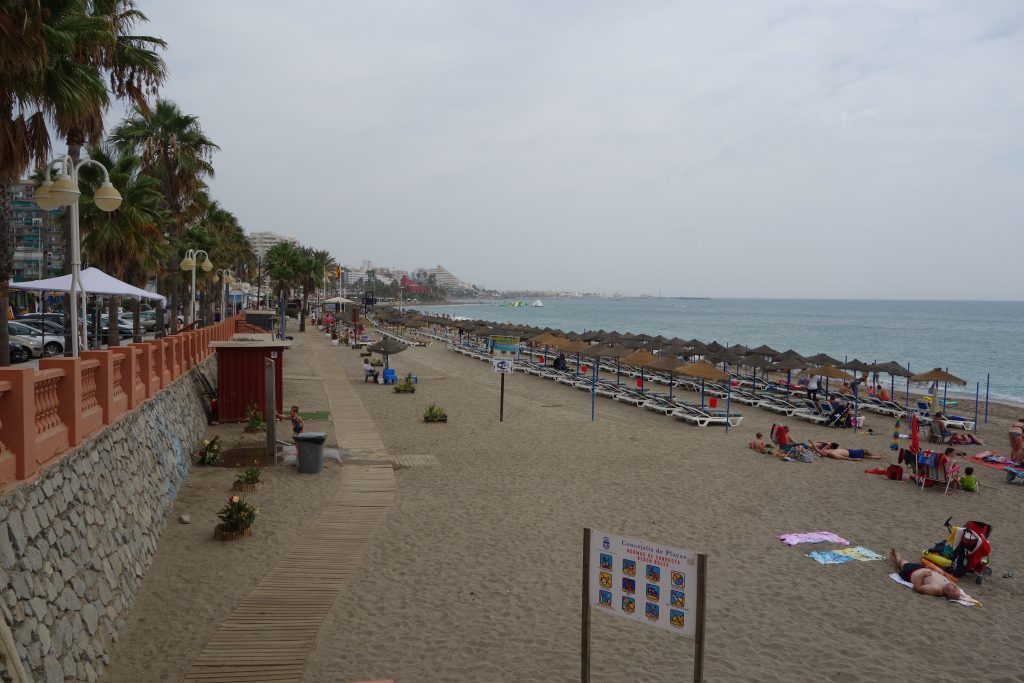
This popular coastline has been over-loved by European tourists who come here to escape their harsh winters
Beautiful beaches or not, no place deserves the treatment the Costa del Sol has endured over the last few decades. Today it is an endless string of high-rise apartments, tired hotels, condo complexes, time-share communities and holiday villas, sometimes packed up against each other, not all of them with ocean views.
It gave Julie and I the shivers to think this is what people call a holiday but we know that they come by the packed charter flights every day to flop onto the beaches and into the bars of these seaside towns. Places like Malaga, Torremolinos, Marbella, Fuengirola and many more continue to flourish because holiday makers, overwhelmingly the British, still see a week on the Costa del Sol as a good deal. But we know we’re a little spoiled in Australia and everything is relative.
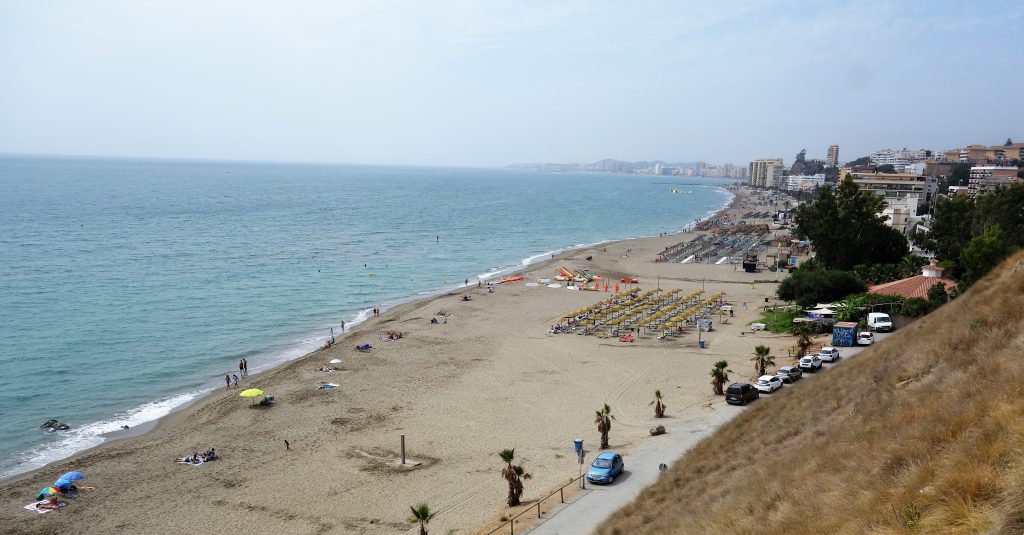
A glimpse of the beach and some of the high rises from a rare viewpoint – most of the coast is just completely over-developed
We followed the coast westward, dropping down occasionally to drive through these towns, walk in the sand and get our feet wet, listening to the different languages, taking in the scene. At Playa Aldea just south of La Chullera we finally found our place, a beautiful beach with only a few tasteful villas lining the sand, no high rises or shopping centres nearby, the water clean, the mountains rising as a backdrop supreme. Okay, this Costa del Sol is perfect.
Our goal for the afternoon was one of the true anachronisms of geography, politics and history – Gibraltar. On a southern tip of the European continent stands a huge rock, protruding dramatically out into the sea, overlooking the famous Straights of Gibraltar which provides the mouth of the Mediterranean between Europe and Africa. Gibraltar unequivocally towers above all else. A strategic piece of real estate guarding these waters for time immemorial, the last 300 years Gibraltar has been part of the British empire, despite Spain’s ongoing desire to clean up this relic from the past and add the rock to their territory.

Rising from the coastal haze is Gibraltar, that monster rock on the European mainland which is owned and controlled by England
Never mind, British it is, and Julie and I drove across the border from Spain and entered the Queen’s realm. Suddenly, spookily, the signs were all in English, the prices were all in English Pounds and Union Jacks flew from every pole. With the huge rock looming menacingly above us, we finally found a parking spot, not easy for a place that values its limited space like Hong Kong or Macau, and wandered along the narrow walking streets.
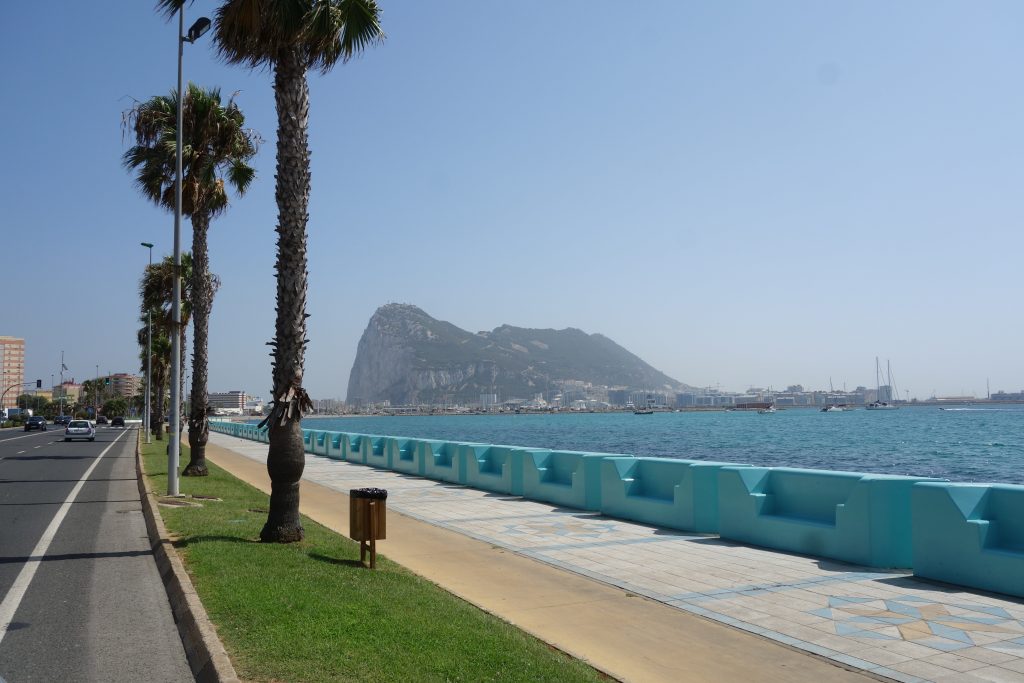
Driving along the coastline we approach Gibraltar with awe and anticipation, much like seafarers have done for thousands of years
Here the English language ruled although many locals speak a hybrid mix of Spanish and English found nowhere else, English pubs served familiar beers in fat round pints and stores like Marks and Spencer lined the streets. It was partly time warp, partly surreal and partly hilarious. Mums speaking to their kids in Spanish and kids replying in English, prices in pounds but euros accepted everywhere (at very variable exchange rates!), cars driving on the right but buying fuel in gallons. All very strange and totally enjoyable.
Driving Tramp into Gibraltar was a snap, the Customs official only wanting to talk about our mighty stead, then rather uniquely we drove across the airport runway before entering the town. On the way back into Spain we just made the runway crossing before they closed it so a plane could land. We camped that night near the beach on the Spanish side, another fascinating day behind us.
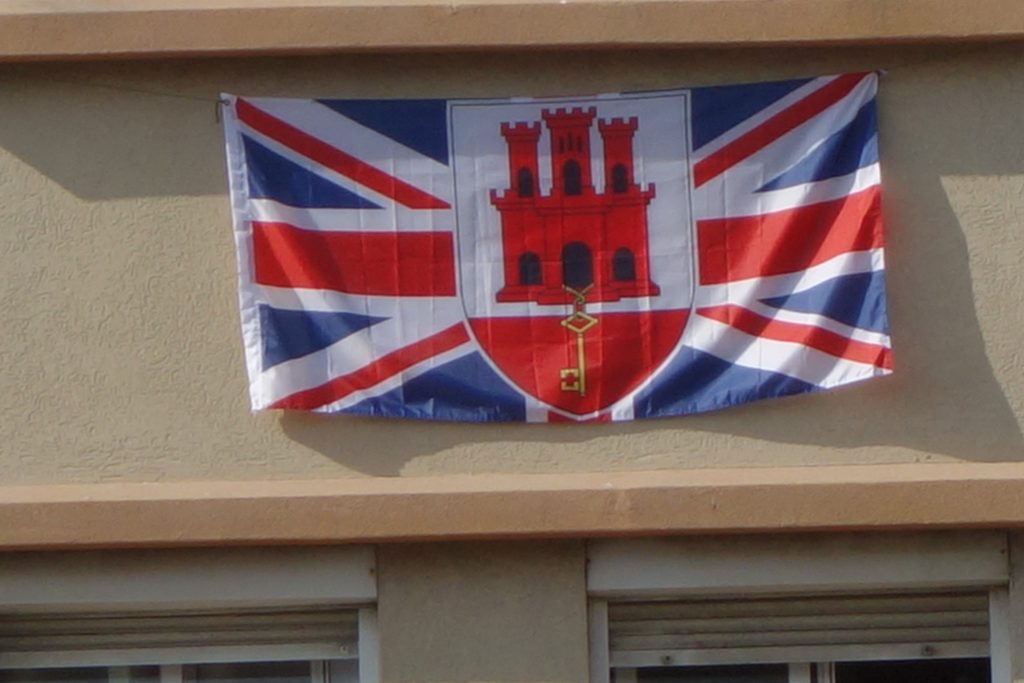
The Gibraltar flag, flown proudly and protectively all across the rock, reminding all who care about who is in control here
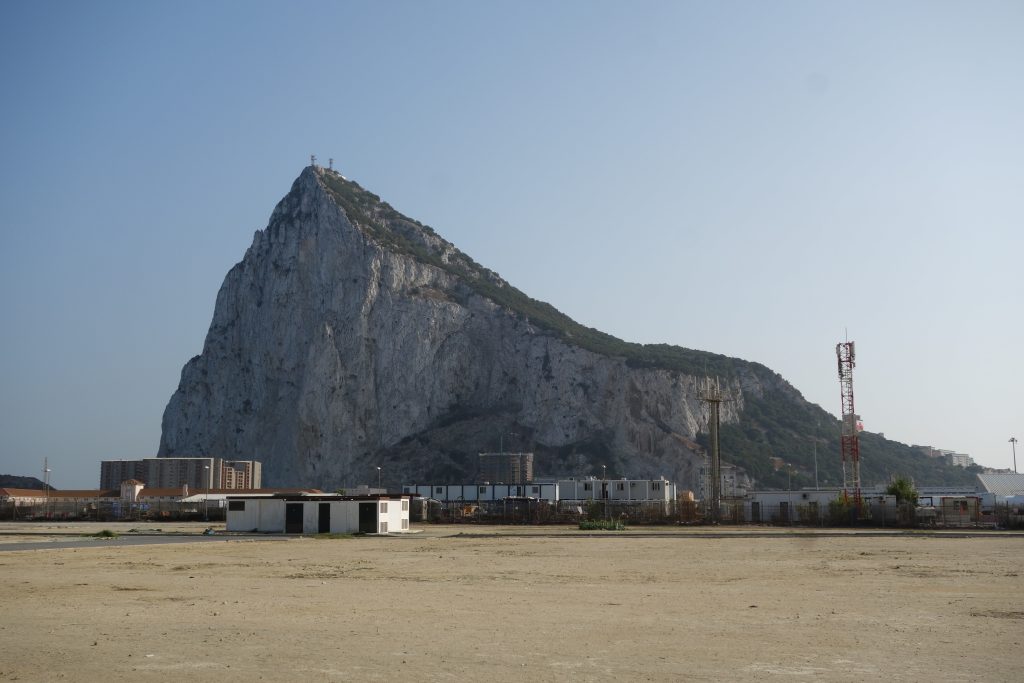
Profile of Gibraltar from the Spanish side – you can also catch a cable car to the top, see the resident monkeys and check out the defensive infrastructure built during WWII
I recently heard a new term – superlative buff – which I think applies well to Julie and I (but perhaps to be fair, more to me than Julie). A superlative buff in the context of travel is someone who wants to see the oldest, climb the highest, visit the northernmost, basically get to the end of anything.
So it was no surprise we had our eyes on Punta de Tarifa, the southernmost point of Europe. Earlier in the summer we had been to the northernmost point in Europe – Nordkapp in Norway – where we had experienced the midnight sun. Now we stood as far south as you can go, to the old fortress out on the little isle at the historic town of Tarifa. Great stuff.
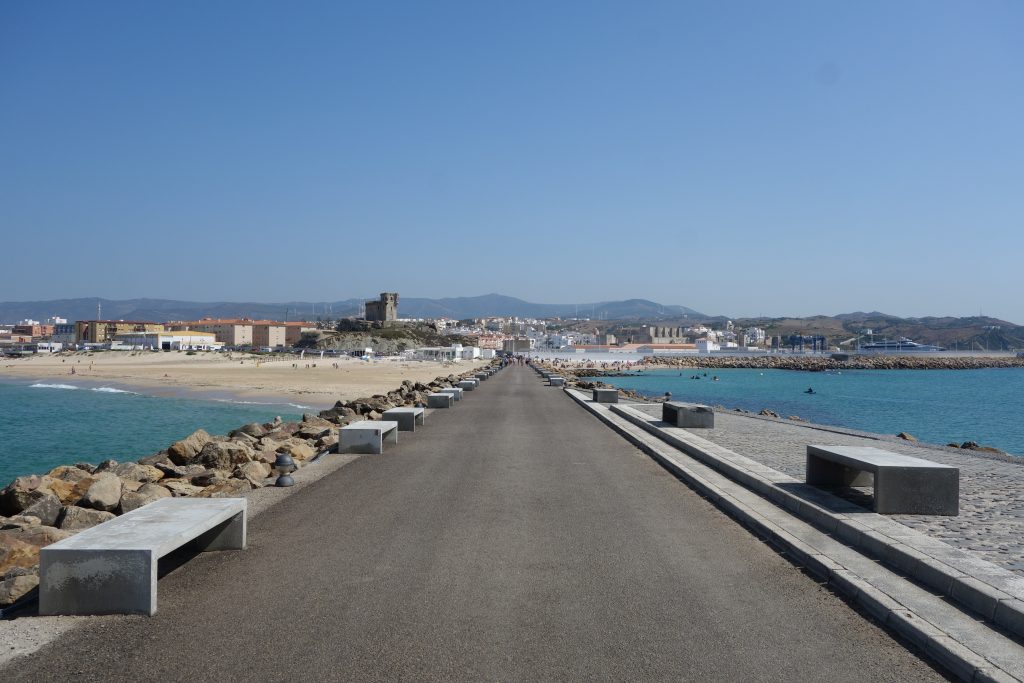
This is looking back at Tarifa from the causeway leading to the fortress. The water on the right is technically the Mediterranean and the water on the left is the Atlantic Ocean.
The ancient town of Tarifa, where the Romans built a fort and probably the Phoenicians before them, has guarded the straights of Gibraltar since before recorded time.
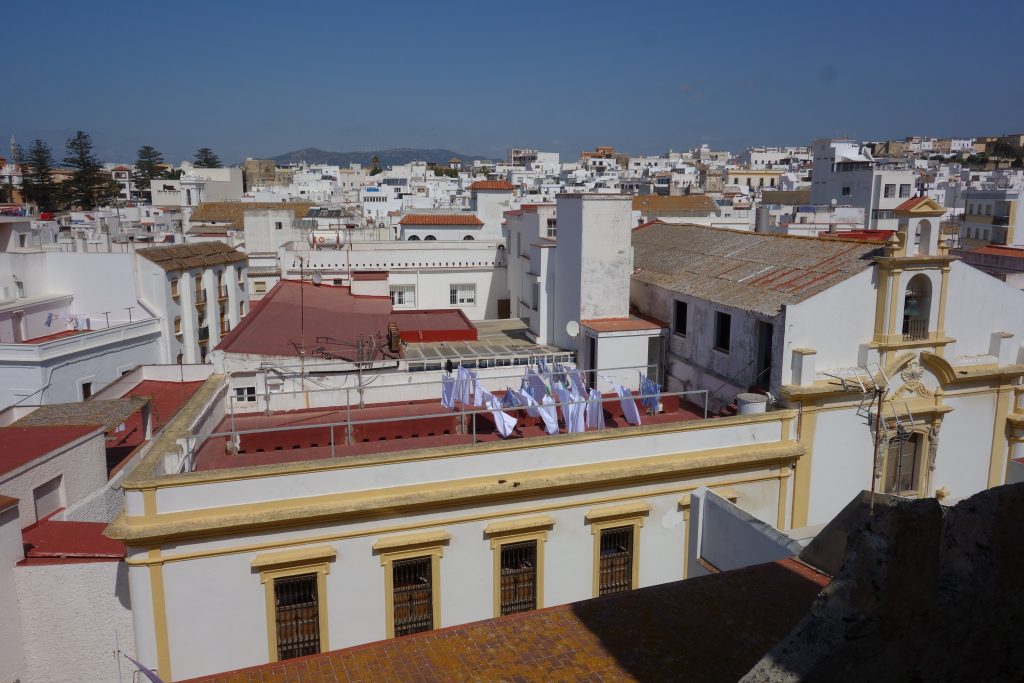
The white-washed buildings, tiled archways and terra cotta roofs of Tarifa gave the town a true Moorish feel
We explored the old fort on the water’s edge, built originally in the 10th century but serving many warlords, chieftains, noblemen, kings, sultans and princes since then, including the fantastically named rulers Guzman the Good and Santos the Brave, and wandered the old narrow streets of the original town, now a popular spot for windsurfers and surfers. The old white-washed town oozed Arab design and culture with the shores of Morocco clearly visible across the straits. But to us it was where the Mediterranean met the Atlantic and where we had no choice but to turn north. As we said, Tarifa was tariffic.
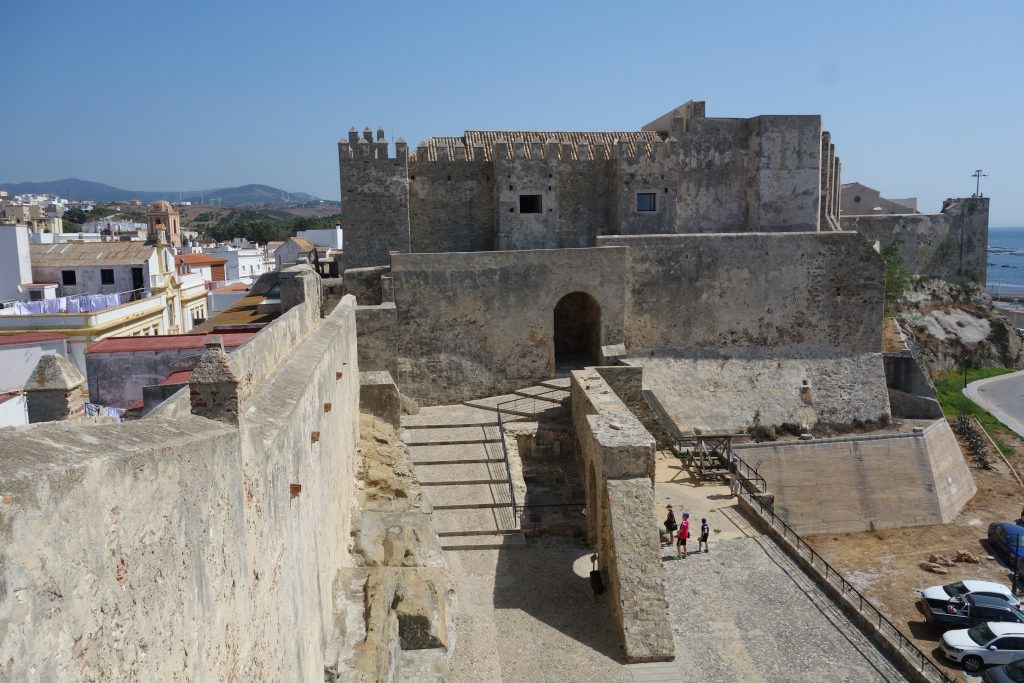
This old fortress, originally built over 1000 years ago and guarding the mouth of the Mediterranean, could tell a few stories
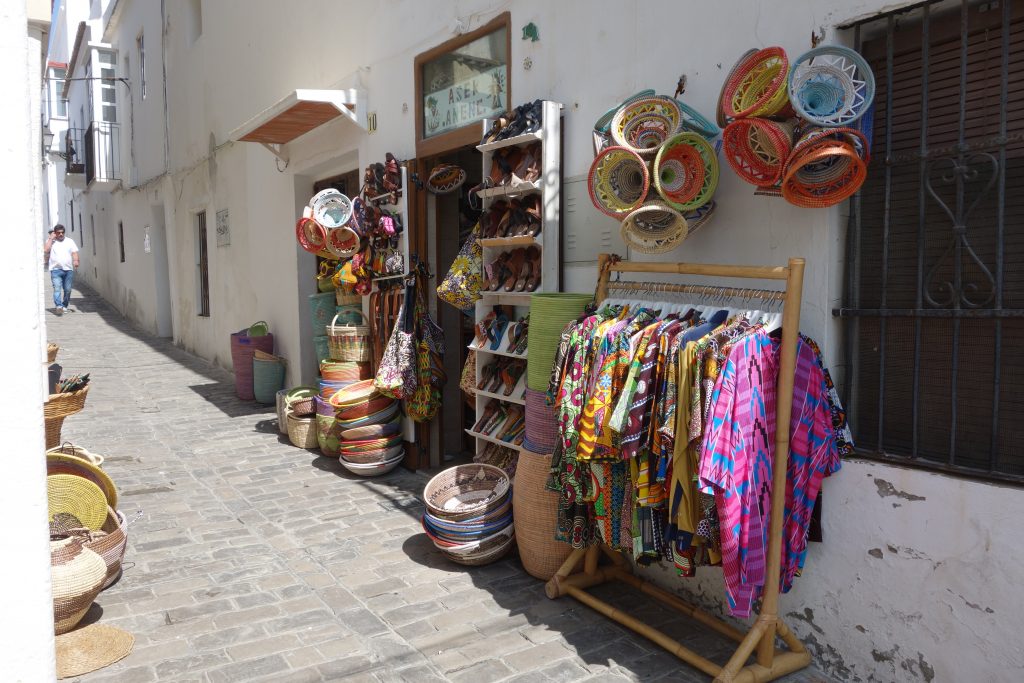
Yes, the people of Tarifa catered for tourists but in a very low key and quiet way, fitting for this beautiful setting
Not satisfied with this dose of Moorish influence and superlativeness, we moved along the coast to Cadiz, another town rich in history and – wait for it – the oldest continuously inhabited city in Europe. Yes, Cadiz was founded by the Phoenicians around 1,100 BC and has been home to someone ever since. Now how cool is that?
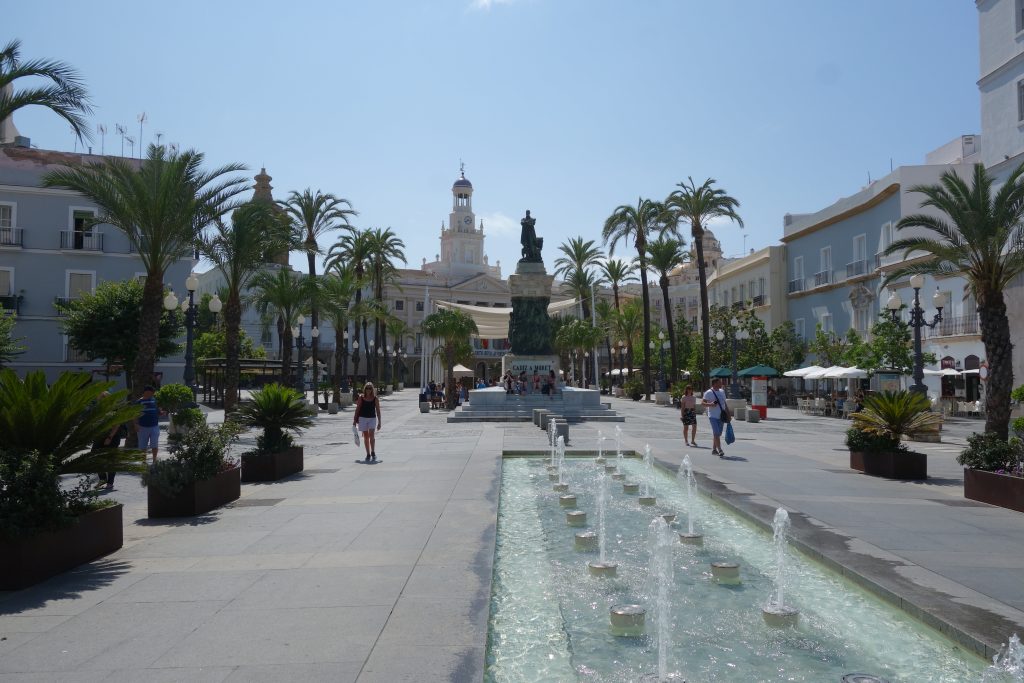
Cadiz might be the sort of town you pass by unless you read up on it – historically significant, beautiful setting, fabulous streets and vibrant waterfront to explore
The old town of Cadiz was fantastic, the 15th century cathedral absolutely outstanding and the beaches between the forts on the north side of town were packed with sunseekers until well past 7pm. Whereas Tarifa was very relaxed, full of windsurfers, divers and surfers, kind of a young modern-day kick-back hippie crowd, Cadiz attracted a slightly older crowd and the sidewalk cafes were filled with people taking in this historic city. We loved it.
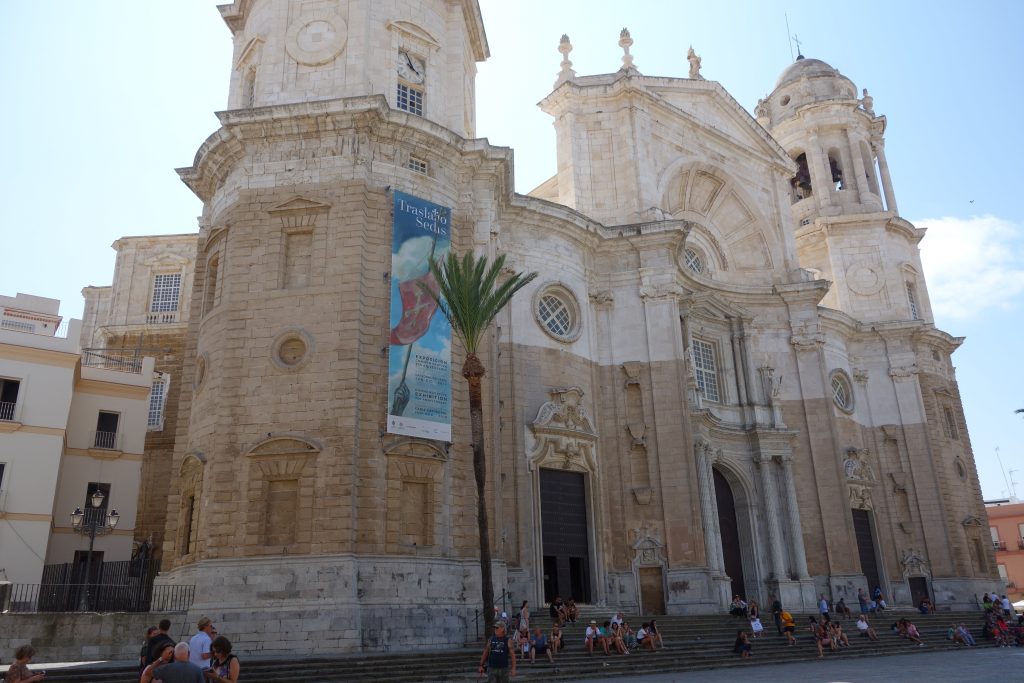
This magnificent 15th century cathedral dominated downtown Cadiz. Unfortunately, like we’ve seen before, the exorbitant entrance fees kept most visitors – including us – outside.
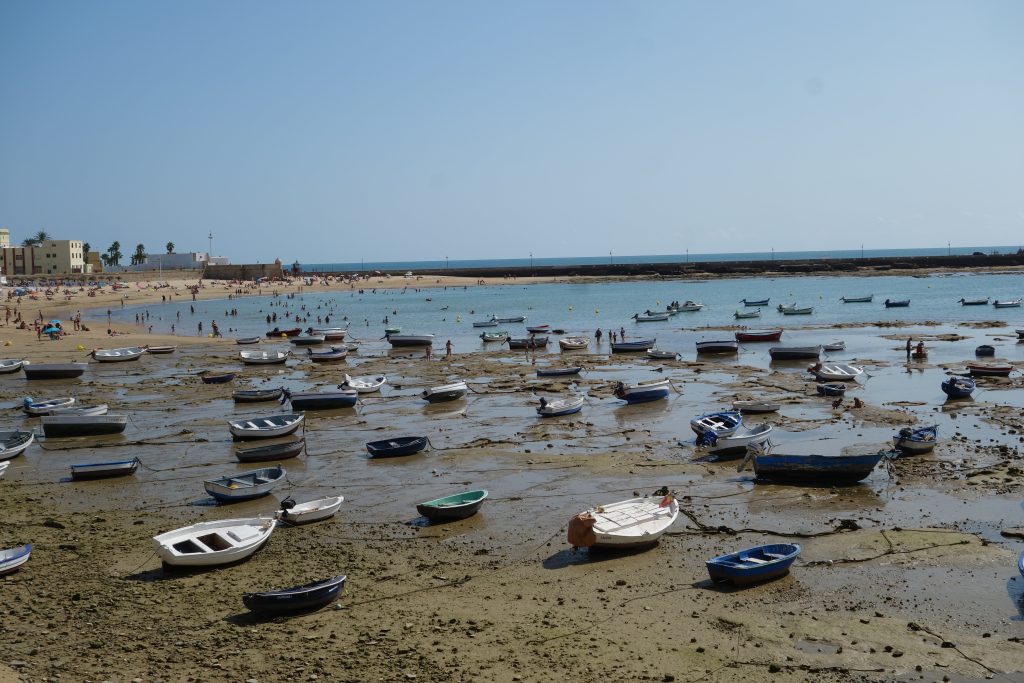
Low tide in Cadiz doesn’t bother all the local fishing boats or the hordes of sunseekers on the beach
We camped that night on a nearby beach, sand between our toes, watching the locals linger until after sunset. As we’ve said many times, travel is all about surprises and today we had two fantastic surprises – Tarifa and Cadiz.
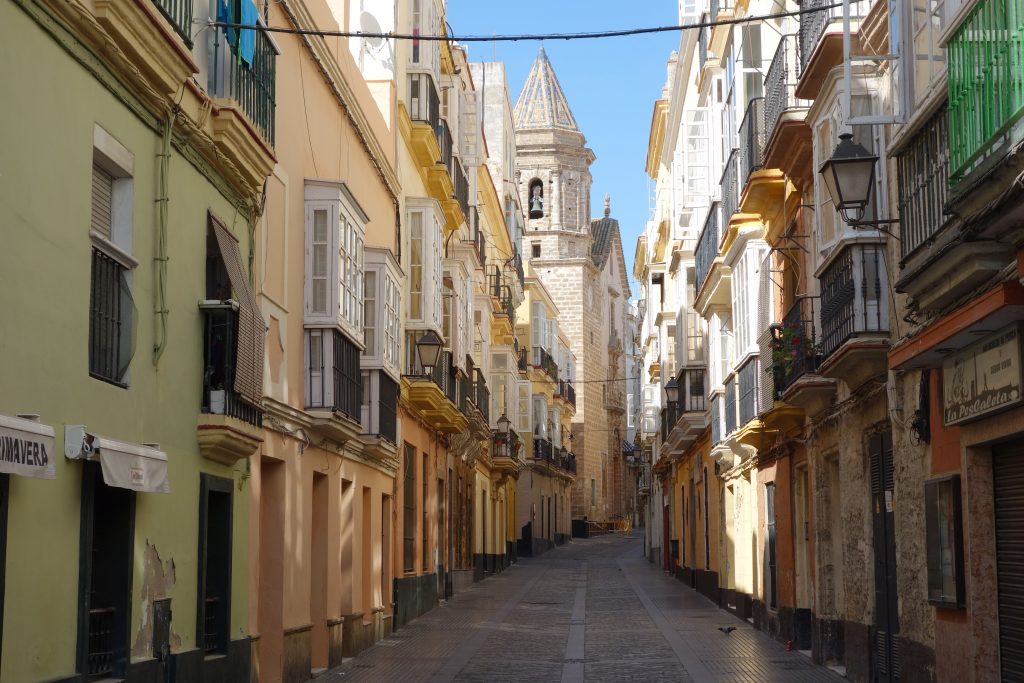
One last look at the old part of Cadiz during the quiet siesta afternoon – quite an unexpected and pleasant surprise
The capital of the Andalusian region of Spain, and undoubtedly its metropolitan superstar, is Seville. Overflowing with rich history, a crossroads to culture, architecture, food and language, today a giant amongst European cities. And there we were, blindly following our GPS Karen through the cobblestone streets of the old part of town, the parked cars, motorbikes, pedestrians and ever-narrowing streets all closing in on Tramp until we had to stop. With a stream of cars behind us and some helpful instructions from a local we managed to back up a bit and squeeze down an impossible alley. Welcome to Seville.
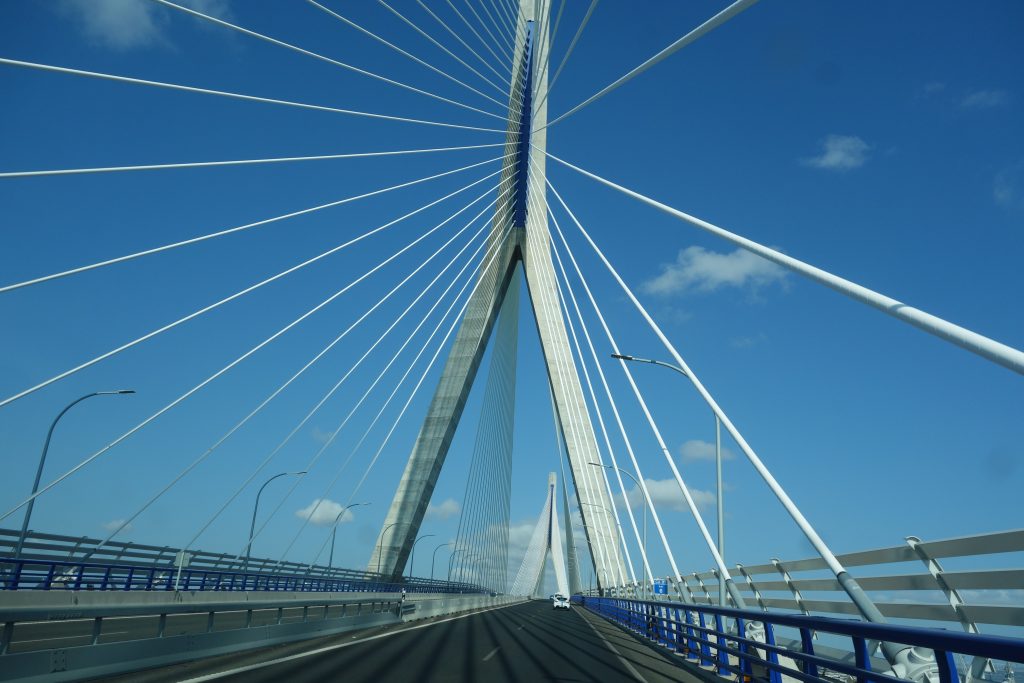
Another of the spectacular bridges we’ve seen in Europe – built by clever engineers but looking more like works of art
Above all else Seville is known for two fabulous complexes, the huge cathedral and the Alcazar, a large sprawling complex built for sultans, princes and kings, and still used today when Spain’s royal family is in town. We started with the cathedral and were immediately caught by its immense size. The largest gothic cathedral in the world – another superlative – it took over 100 years to build and was completed in 1508.
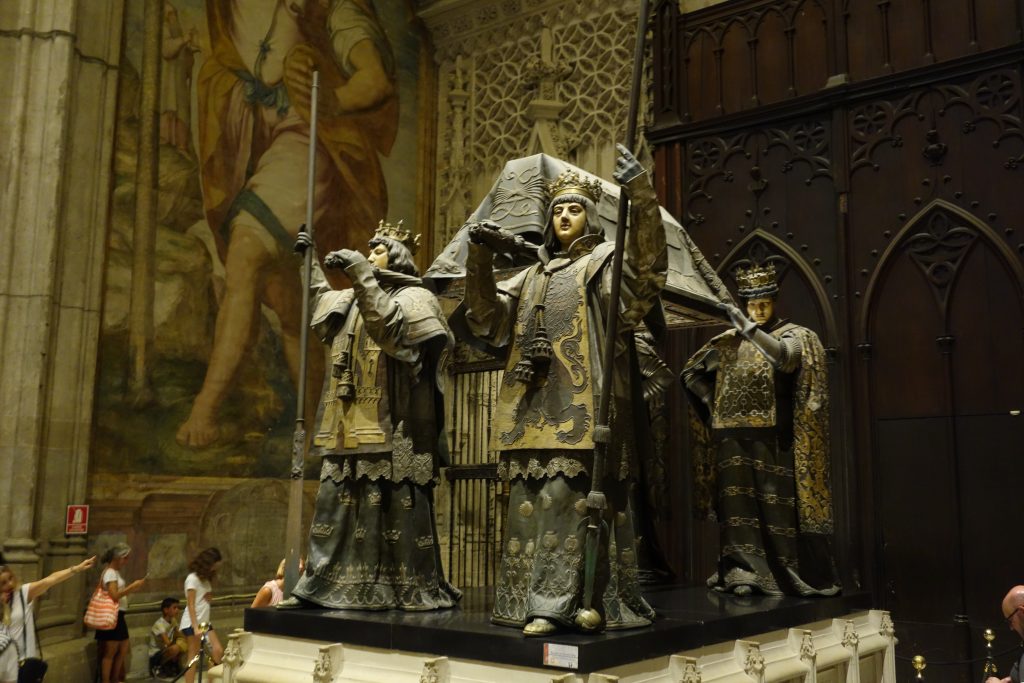
The impressive tomb of Christopher Columbus in the cathedral of Seville – a fitting home to Spain’s most famous explorer
The cathedral is like no other with a series of interlinked rooms off to one side filled with priceless art and religious artefacts, a square bell tower, called the Giralda, that started life as a mosque minaret but today can be climbed to provide expansive views of the city, the burial site of many kings and bishops, and the beneficiary of many modifications, refurbishments and structural changes. But the cathedral is probably best known as the burial site of Christopher Columbus, the so-called discoverer of the new world.
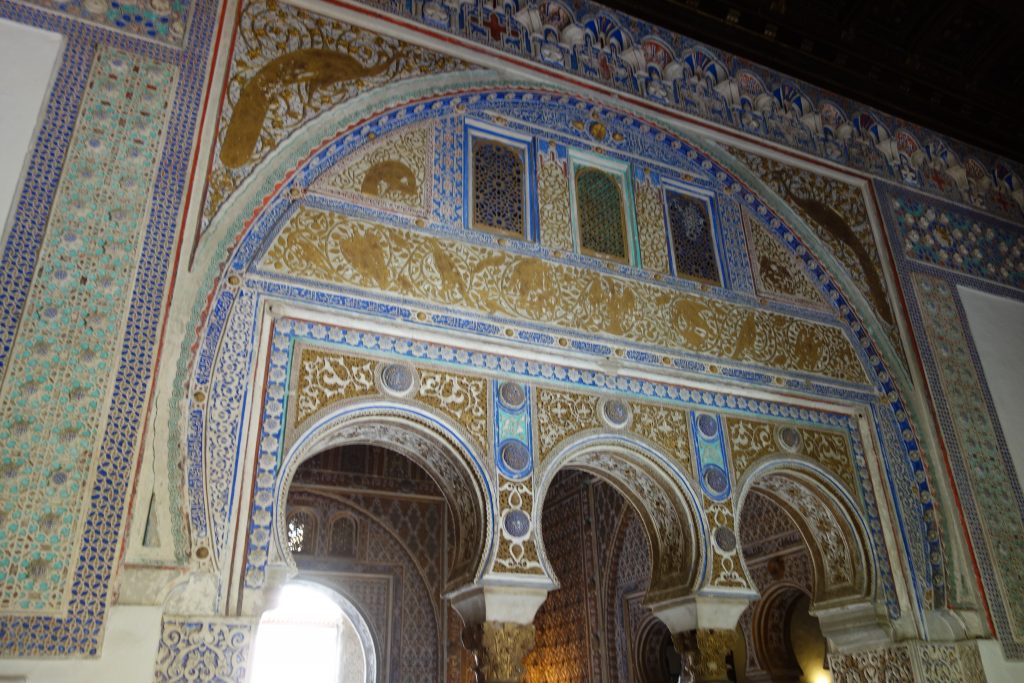
The Alcazar was a spectacular example of the rich Moorish influence in Andalucia and we loved the elaborately decorated walls and ceilings
We moved on to the Alcazar, first built by the Moors in the 10th century, modified so many times since then by its various rulers to match the various architectural norms of each moment, the tapestries, the museum pieces, the stunning gardens, that today the Alcazar is a walk through the 1,100 year history of the region, all encompassed in one complex.
The combination of these two UNESCO World Heritage sites, the intriguing walk through the narrow streets, the stifling heat and the hassle of driving around the cramped city for ages looking for a semi-legal and hopefully-safe parking spot absolutely wore us out. Seville definitely deserved more time but we ran out of puff and high-tailed out to make camp nearby. Spain and Andalusia had been one of the defining moments of our European journey but we were eyeing a new country and some time relaxing in the sun.
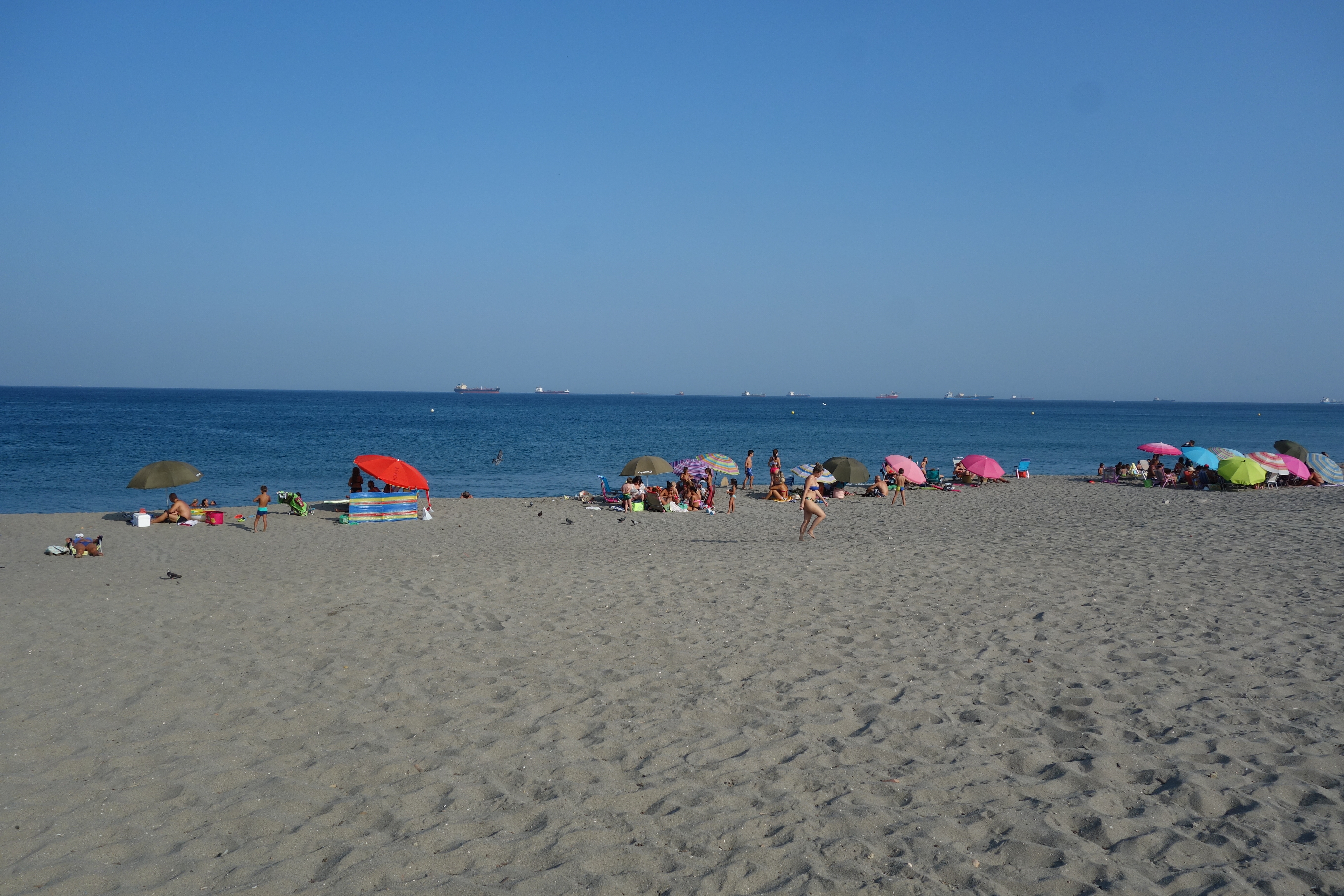












Comments
The Costa del Sol and a big rock — No Comments
HTML tags allowed in your comment: <a href="" title=""> <abbr title=""> <acronym title=""> <b> <blockquote cite=""> <cite> <code> <del datetime=""> <em> <i> <q cite=""> <s> <strike> <strong>